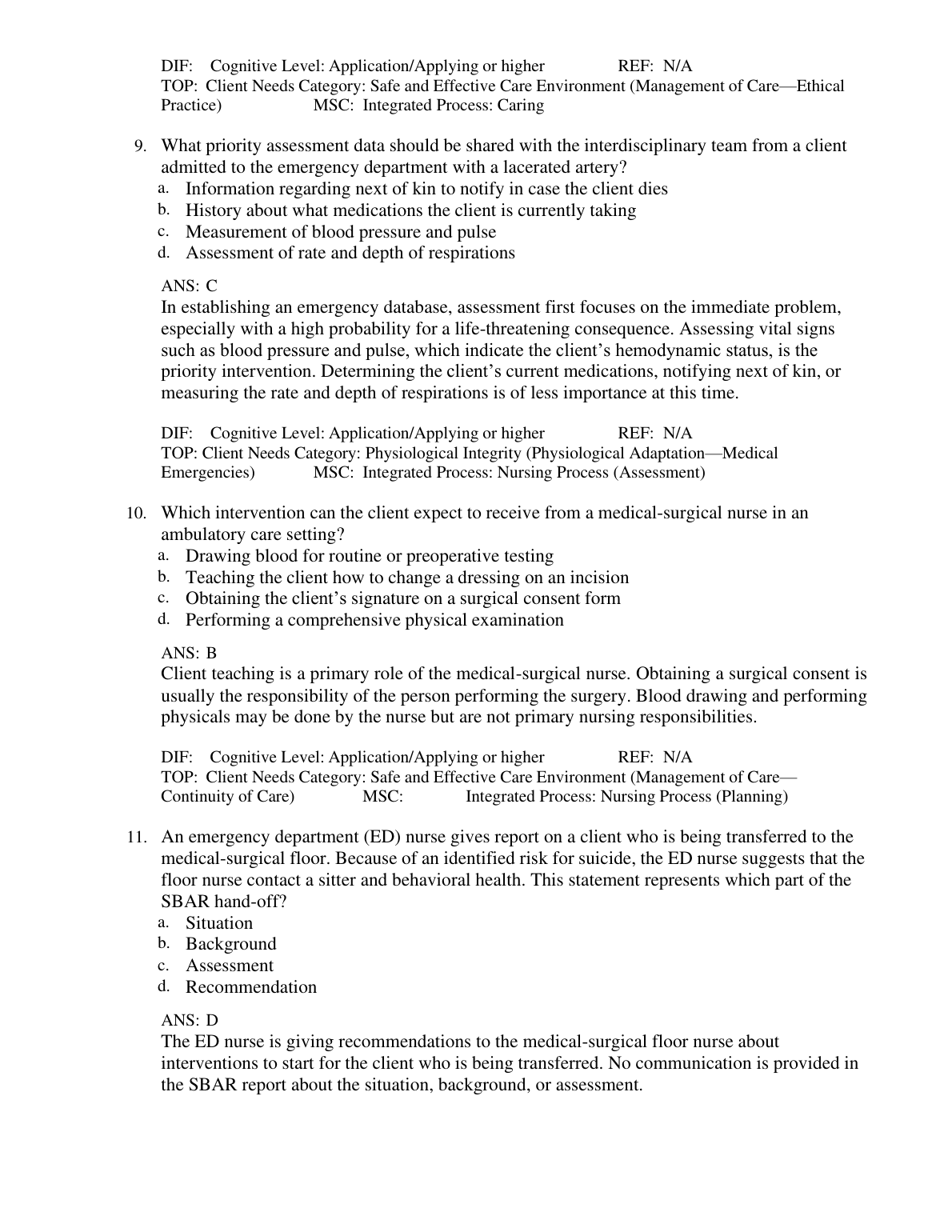 Cookies!
Cookies!
 View example
View example
MEDICAL SURGICAL NURSING PATIENT CENTERED COLLABORATIVE CARE 4TH EDITION IGNATAVICIUS TEST BANK 2024 UPDATE. DOWNLOAD on www.leakedexams.com INSTANTLY.
1. Which action demonstrates that the nurse understands the purpose of the Rapid Response
Team?
a. Monitoring the client for changes in postoperative status such as wound infection
b. Documenting all changes observed in the client and maintaining a postoperative
flow sheet
c. Notifying the physician of the client’s change in blood pressure from 140 to 88
mm Hg systolic
d. Notifying the physician of the client’s increase in restlessness after medication
change
ANS: C
The Rapid Response Team (RRT) saves lives and decreases the risk for harm by providing
care to clients before a respiratory or cardiac arrest occurs. Although the RRT does not replace
the Code Team, which responds to client arrests, it intervenes rapidly for those who are
beginning to decline clinically. It would be appropriate for the RRT to intervene when the
client has experienced a 52-point drop in blood pressure. Monitoring the client’s postoperative
status, maintaining a postoperative flow sheet, and notifying the physician of a change in the
client’s status after a medication change would not be considered activities of the Rapid
Response Team.
DIF: Cognitive Level: Comprehension/Understanding REF: pp. 2-3
TOP: Client Needs Category: Safe and Effective Care Environment (Management of Care—
Collaboration with Interdisciplinary Team)
MSC: Integrated Process: Nursing Process (Assessment)
2. The Joint Commission focuses on safety in health care. Which action by the nurse reflects The
Joint Commission’s main objective?
a. Performing range-of-motion exercises on the client three times each day
b. Ensuring that the client is eating 100% of the meals served to him or her
c. Assessing the client’s respirations when administering opioids
d. Delegating to the nursing assistant to give the client a complete bath daily
ANS: C
It is important for the nurse to assess respirations of the client when administering opioids
because of the possibility of respiratory depression. The other interventions may or may not
be necessary in the care of the client and do not focus on safety.
DIF: Cognitive Level: Application/Applying or higher REF: N/A
TOP: Client Needs Category: Safe and Effective Care Environment (Safety and Infection Control)
MSC: Integrated Process: Nursing Process (Assessment)
Â
`
| Author | clerk |
| Published | 16 Dec 2025 |
| Included files | |











